by Jitske Lamain
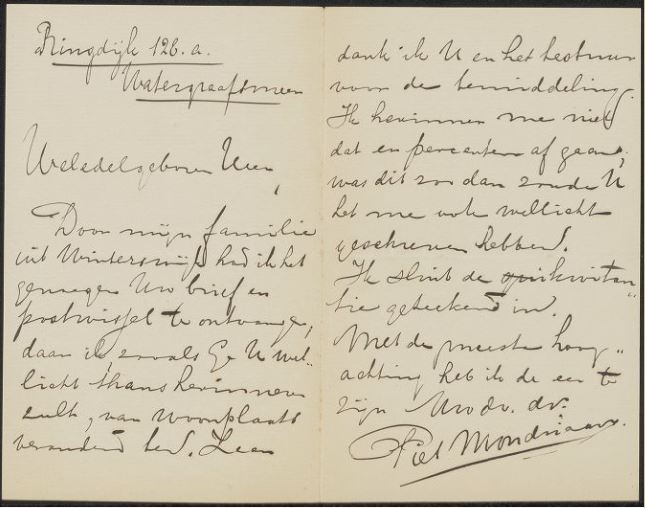
An increasing amount of letters by Mondrian has been handed down from around 1910 onwards. In these letters, Mondrian writes, among other things, about various artists societies he was a member of and exhibited his work. Whereas Mondrian writes with some regularity about the Moderne Kunstkring (est. 1910), and the Hollandsche Kunstenaarskring (est. 1913), correspondence from Mondrian to the Utrecht based society Kunstliefde (est. 1807) was not known until now. Recent archival research has resulted in the emergence of two letters from before the turn of the century, providing new information regarding Mondrian’s involvement with Kunstliefde. In one of the recently discovered letters to Kunstliefde, Mondrian writes about an artwork that was sold thanks to the mediation of the board, providing valuable insights into the conditions under which Mondrian exhibited his work (fig. 1).
by Wietse Coppes
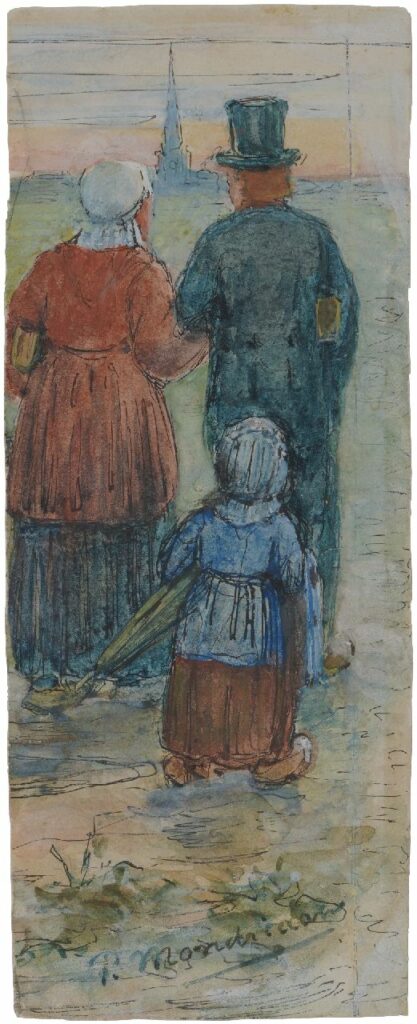
In the spring of 2018, former curator of the Kunstmuseum Den Haag Hans Janssen discovered a small, previously unknown watercolor by Mondrian (fig. 1). Its left half was found to be missing, but the small work could nevertheless be related to two other surviving watercolors, which have strong similarities in size, subject matter, execution and signature (figs. 2 & 3). The two already known works are included in Piet Mondrian: catalogue raisonné with a tentative dating of c. 1898-1901. However, a fresh look at the group of three works yields a new hypothesis, linking the watercolors to Mondrian’s apprenticeship with retired painter and draftsman Jan Braet von Uberfeldt in the years 1888-1892. This places them among his earliest surviving works. (more…)
by Jitske Lamain
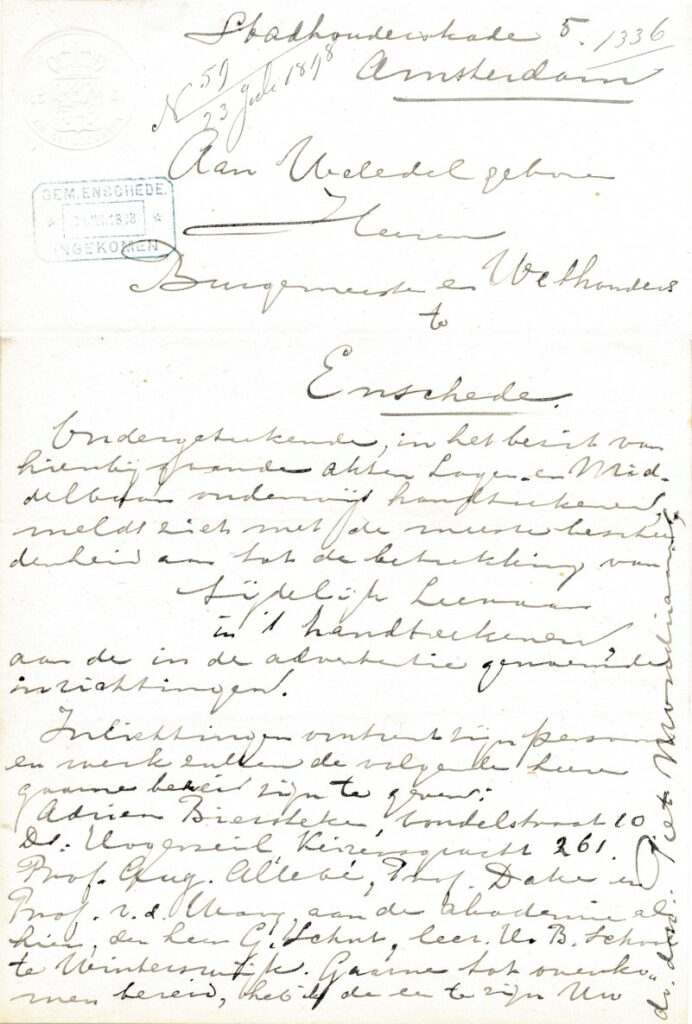
Correspondence from the period before the turn of the century has been handed down only sporadically. Due to limited information about this period, the known letters from this time evoke many questions. One of the letters that has been handed down, concerns Mondrian’s request of a certificate of conduct for a job application in Enschede in 1898. Until now, however, little is known about the job application itself. Thanks to the discovery of Mondrian’s letter of application in the municipal archive in Enschede, some of these queries can be solved. The references mentioned in the letter of application provide new insight into Mondrian’s network around that time and show that his network supported him not only financially but also professionally. (more…)
by Leo Jansen

There is a well-known saying, used all over the world: ‘l’histoire se répète’ – history repeats itself. It is typically uttered in times of unpleasant or even dramatic events. For example when an army brutally and senselessly invades another country in order to sow death and destruction. Wars are as old as humanity and citizens will always be forced to flee from danger. In the very worst case, taking action requires everything to be dropped and people simply abandon house and hearth. Those who, despite the threats, have time to plan their departure can later see how fortunate they were given the circumstances. Such was the case with Piet Mondrian: he fled Europe because he was one of those placed by the Nazis on their list of ‘Entartete Künstler’, degenerate artists. But he had time, as well as support. Mondrian’s estate includes documents that tell us about his flight from London to New York in 1940. (more…)
by Wietse Coppes

Scholars of The Mondrian Papers are currently working on a scientific overview of all portrait- and studio photos of Mondrian. This does not involve photographs taken by Mondrian (there are only two known examples of photos he produced himself, both taken in 1903, with a camera belonging to a friend), but rather photos of the artist and/or his studio. The research yields new insights into the way in which Mondrian used photography to present himself. It offers additional information as well, for example, about the circumstances leading up to photo sessions or the photographers. The latter is the case with a photo from the summer of 1942, which was discovered a few years ago in Mondrian’s estate. [fig.1] (more…)
by Leo Jansen
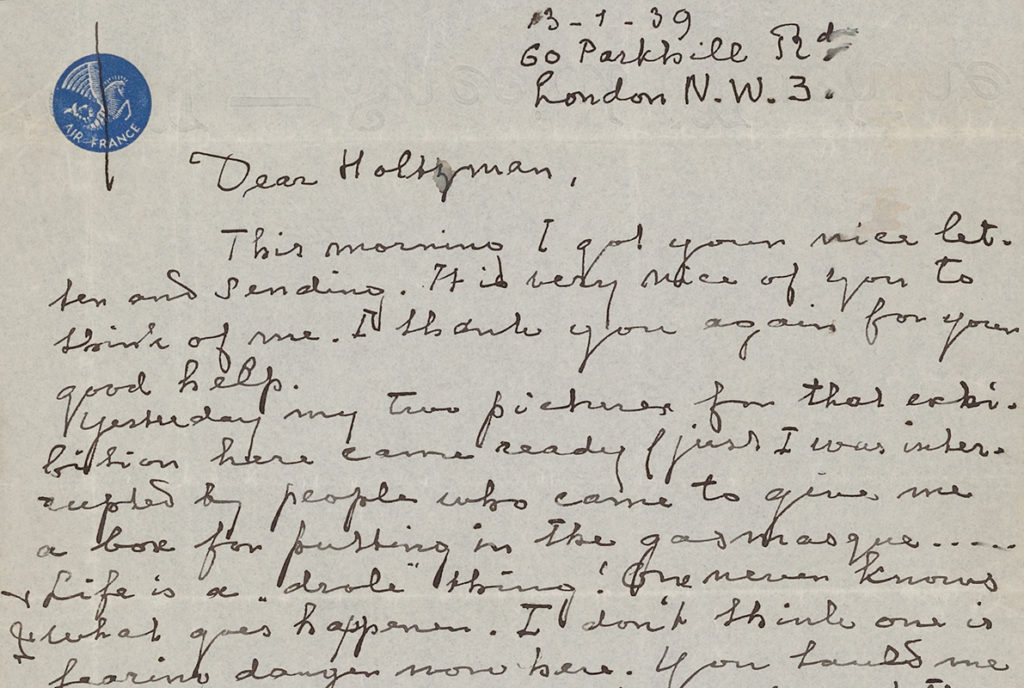
Piet Mondrian wrote his letters in three languages: Dutch – his native tongue –, French and English. The online edition of Mondrian’s complete correspondence which is under preparation is meant to serve an international audience of researchers and other interested parties. That is why in The Mondrian Papers – besides the original versions – all letters written in Dutch and French are also offered in English. In addition, all annotations and comments are published in English in this edition. To date, fewer than three per cent of Mondrian’s letters have been published in translation! Thus the edition project contains a substantial sub-project: providing translations from Dutch and French into English. A job that presents its own, unique challenges. (more…)
by Clarissa Frascadore
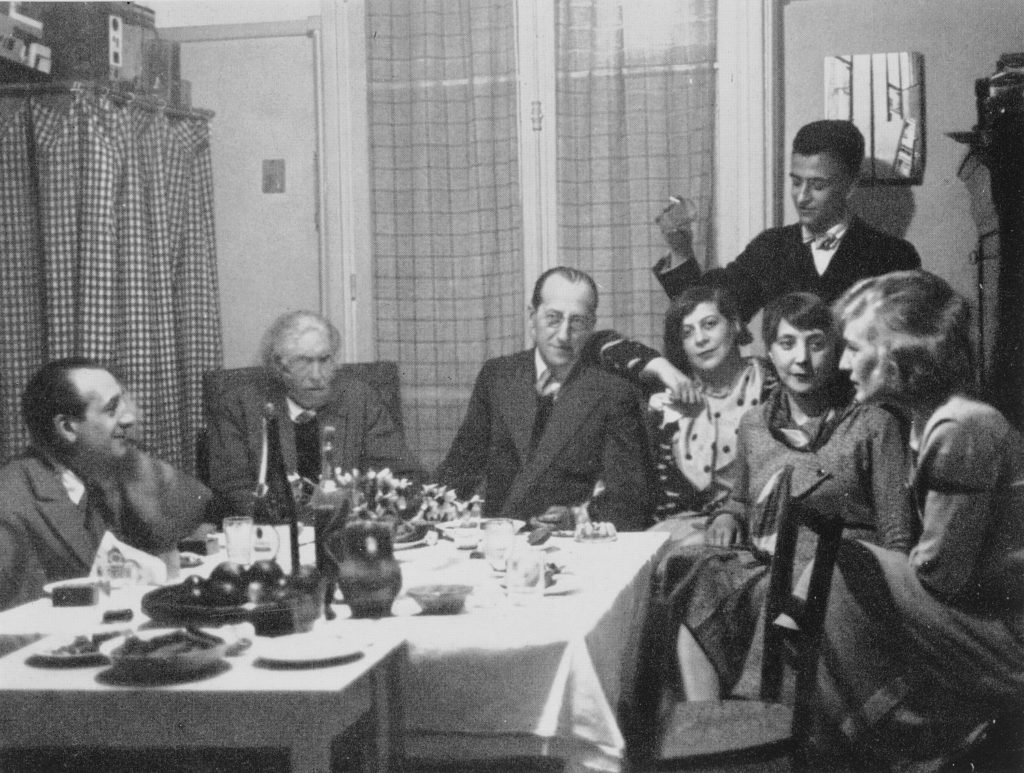
In 1956 Michel Seuphor published the first and widely cited biography of Piet Mondrian. In it he described the artist as an ascetic, a saint and a hermit. Time and again scholarly publications have elaborated on this description until, in our time, it has become the myth of Mondrian. Piet Mondrian was later defined in a psychological article as ‘a rigid, isolated, compulsive character, sternly defended against nature and human movement.’ The myth is challenged, however, by Mondrian’s letters and by a re-evaluation of his use of photography for self-representation. (more…)
by Wietse Coppes
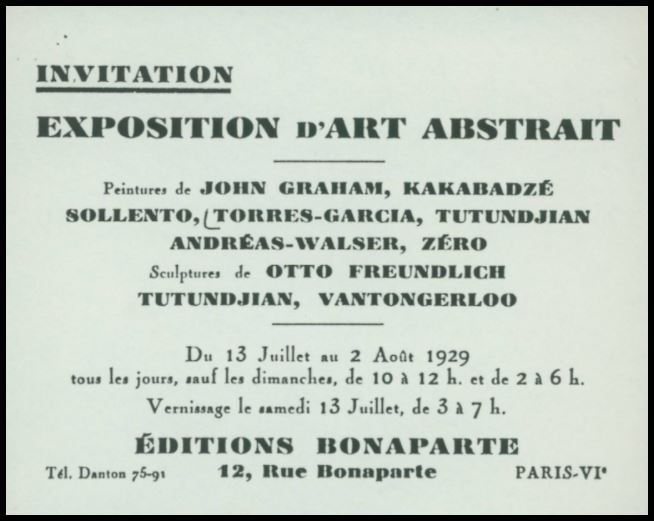
In October 2021, the RKD – the Netherlands Institute for Art History received a surprising bequest from Onno Boers (1936-2021), consisting of hundreds of artists’ letters from the twenties and thirties of the previous century. A significant part of these, including three previously unknown letters by Piet Mondrian, appeared to be addressed to Paris-based Dutchman Leopold van Oijen. In the late nineteen twenties, this publicist and administrator was associated with Galerie Bonaparte and was founder of an ambitious, but currently forgotten Parisian art society which included Mondrian as well. (more…)
by Leo Jansen
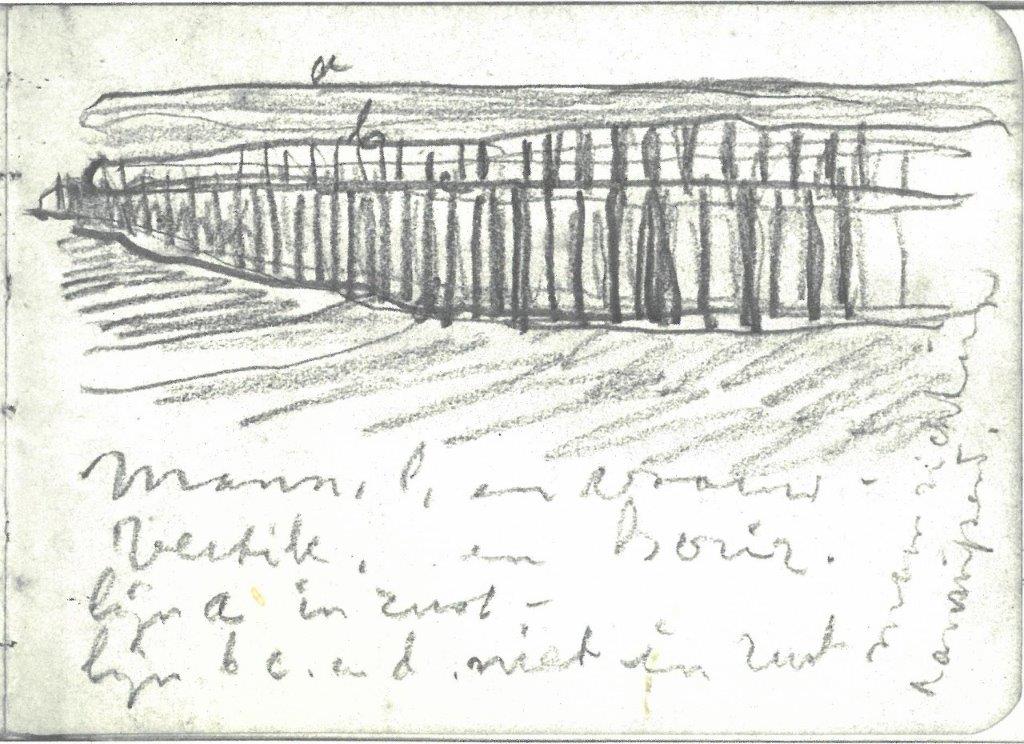
The painter Mondrian was also an author – not merely of letters but also of essays about his ideas on art. These essays more or less reluctantly took shape, for his writing did not come easily. But, as he himself wrote, ‘you have to make sacrifices for what you believe in!!’ His debut as a writer in 1917 at once became his master piece: the series of articles ‘The New Plastic in Painting’, which appeared in the first issue of De Stijl magazine. In eleven instalments with a total of approximately 33,000 words, he outlined his vision of the art of the future – a spiritual art, which would be abstract and which was to contribute to a better society. Through letters Mondrian wrote over the course of many years, we are able to trace how step by step he came to record his view on art and the significance he attributed to his authorship. (more…)
By Wietse Coppes

In the years 1916-1918 Mondrian produced two self-portraits. For a long time it was thought that these had both been commissioned by his friend, collector Sal Slijper. However, the research into the letters Mondrian wrote to Slijper shows these works in a surprisingly new light. They reveal the reason why during this period Mondrian decided to make self-portraits. Both of these ended up at the Kunstmuseum The Hague, but one of these made wanderings that remained obscure until now.
(more…)by Laurens Kleine Deters

Two letters from Mondrian were recently found in the Amsterdam City Archives. The letters date from October 1904 and July 1908, and were addressed to the committee of the Society for the Creation of a Public Collection of Contemporary Art in Amsterdam (Vereeniging tot het Vormen van eene Openbare Verzameling van Hedendaagsche Kunst te Amsterdam, VVHK), which was better known at the time as the ‘society with the long name’. Up to this point only two picture postcards by Mondrian were known from 1904, and from 1908 a handful of letters and postcards. These recently discovered letters throw light on one of Mondrian’s less well-known and little researched activities: the painting of copies. (more…)
There was great consternation when in 2012 three art works were stolen from the Greek National Gallery in Athens: a sixteenth-century drawing by Guglielmo Gaccia, a woman’s portrait painted by Picasso from 1939 and an oil sketch by Mondrian from 1905. Equally great is the relief, now that nine years later at least the paintings have been recovered by the Greek authorities. According to the police, the drawing was destroyed by the perpetrators. A day after the paintings had been recovered, they were shown to the press. One suspect has been arrested. Although during the presentation no comments were made about the condition the paintings were in, it would appear that the Mondrian did not remain entirely unscathed. (more…)
by Leo Jansen

When reading Mondrian’s letters, it soon becomes evident that the artist was an accomplished networker. Whether this was because of his membership of artists societies, his attendance at openings and conferences, or his visits to establishments where he met kindred spirits – he knew where and how to gain useful contacts and how to maintain them. He also moved with ease through the well-to-do middle class circles where he might be able to meet prospective buyers of his work. But networking is not merely about taking, it involves giving as well. A short letter to one of his friends perfectly illustrates how this worked. (more…)
by Laurens Kleine Deters

In October and November 1913 an exhibition of modern Dutch art, which had until recently remained more or less unknown, took place in the Prussian city of Bromberg. Reviews reveal that the artists representing ‘cubism’ were Piet Mondrian and his friends Peter Alma and Lodewijk Schelfhout. (more…)
by Wietse Coppes

Unlike Vincent van Gogh, Piet Mondrian hardly ever illustrated his letters with sketches. On a total of about 1,700 letters, sketches are only to be found on a dozen of them. One of these illustrated letters is the subject of this post. Containing only a rough sketch, it nevertheless lead to the identification of a corresponding painting. Due to the fact that Mondrian provides some background information on the sketch, the limited provenance data of the work could also be supplemented.
(more…)by Leo Jansen

Every now and then something unexpected comes to light at an auction. In June 2018 three black-and-white photographs appeared in a sale in Cologne, showing close-ups of a maquette for a stage set designed by Piet Mondrian in 1926. It was long known that Mondrian had made the model; it appears, for example, in the photo of his studio shown above, where it can be seen standing on the black cabinet to the left. Moreover, several copies of the close-up photographs were in circulation and indeed reproduced in magazines in Mondrian’s lifetime. What makes the Cologne photographs unique is not so much the images themselves, but rather what can be seen on the back of one of them: a previously unknown sketch by Mondrian, in which he indicated the intended colours for the stage set.
(more…)By Wietse Coppes

The Mondrian Papers project team, who are working to annotate letters and postcards by Mondrian, regularly make smaller and larger discoveries. Some of these relate to Mondrian’s interest in theosophy, a pseudo-scientific, philosophical belief system which centres on a universal divine wisdom that is the basis of all religions anywhere in the world. Within the Mondrian literature there is no consensus about the role that theosophy played in Mondrian’s life or about its influence on his aesthetics. Each new piece of information helps us to adjust the picture we have. One example is the postcard which Mondrian wrote on 24 October 1909 to his painter friend Kees Spoor, which establishes that Mondrian was present at a theosophical lecture. This gives new meaning to a letter which Mondrian wrote three months later to the writer and translator Arnold Saalborn. (more…)
by Laurens Kleine Deters

In our regular feature ‘Special correspondents’ we take a closer look at individuals with whom Mondrian corresponded. This time the spotlight is on Dutch artist Jan (Jean) Verhoeven (1870-1941). Earlier this year, the only known postcard from Piet Mondrian to Verhoeven surfaced at an Amsterdam auction. The postcard was bought by the Van Reekum-van Moorselaar Foundation, which donated it to the RKD in July. (more…)
by Leo Jansen

When Mondrian’s edited correspondence and theoretical writings finally appear on The Mondrian Papers, it will be the result of a complex and long-running project. But how does a project such as this operate? How did it begin, who does the work, what is their background, how is it all organised? As a contribution to our series ‘A look behind the scenes’, here is a little more about the ins and outs of the Mondrian Edition Project. (more…)

Not long ago it was announced on this website that the Mondrian and De Stijl exhibition in the Reina Sofía Museum in Madrid had been postponed. The exhibition was originally due to open in May 2020, but it was then delayed because of the Corona pandemic. In the meantime a new date has been set for the exhibition, that will now open on 11 November. It is the first substantial overview of the Dutch art movement to be presented in Spain. (more…)
By Wietse Coppes

Research into Mondrian’s correspondence and writings reveals not just a great deal of new information about the artist’s life, but also concerning his work. That the letters can help with securing attributions emerges from our provenance research into the painting White Christmas Roses, which turned up recently. This work was brought into the auction house Bonhams in New York early in 2020. (more…)

In March 1930 a photograph of Mondrian’s Paris studio appeared in the journal Das Kunstblatt. The photograph shows one of his easels standing almost flat against a wall decorated in the neoplastic style. Because the easel is painted half black and half white, the photograph has been dated to 1928, when Mondrian started adding more white elements to the neoplastic decoration of his studio. In 2012 Wietse Coppes had already suggested that this photograph was made by the Swiss historian of art and architecture Sigfried Giedion, but now the team at The Mondrian Papers has found the actual vintage print in the Giedion archive. (more…)
by Laurens Kleine Deters

In the middle of November 1917, after a long delay, the first issue of De Stijl appeared. It soon became an influential journal under the leadership of the painter and architect Theo van Doesburg and it aimed to bring about a revolution in the arts. A large group of the letters that Piet Mondrian wrote to Van Doesburg and others in this period have been preserved. The letters give a picture of what was going on behind the scenes in the early days of De Stijl, a time that was dominated by conflict with the journal’s publisher, X. Harms Tiepen.
by Wietse Coppes

In our regular feature ‘Special correspondents’ we take a closer look at individuals with whom Mondrian corresponded. This time we focus on an eccentric figure who was well known in the Dutch art world in the period 1910-1920, but afterwards completely disappeared from view: Alfred Waldenburg.

At an auction in February the RKD purchased the archive of the Dutch artists’ society known as the Hollandsche Kunstenaarskring. The archive includes four previously unknown letters and postcards from Piet Mondrian. They were written in the period c. 1918-1923 and addressed to various committee members of the Kunstenaarskring.
(more…)by Leo Jansen

In the ‘Behind the scenes’ column we give insights into what our research for the Mondrian Edition Project actually involves. This time we focus on the task of tracing the locations of as many letters and essays as possible to be included in the Edition, and we consider if it is feasible to see all original Mondrian letters. (more…)

The exhibition Mondrian & De Stijl in Madrid’s Reina Sofía museum has been postponed. It was originally due to open to the public on 13 May, but this has not been possible because of the COVID-19 crisis. The exhibition has been delayed for an indeterminate period. It is hoped that it can go ahead in the autumn of 2020. (more…)

The exhibition Mondrian Figuratif, which opened in September at the Musée Marmottan Monet in Paris, tells the story of the Mondrian collector Salomon (Sal) Slijper. For the catalogue Wietse Coppes and Leo Jansen, editors of the Mondrian Edition Project, have written an extensive essay based on the surviving letters and other documentary sources, in which they explore the complex friendship between Mondrian and his friend and patron, the collector Sal Slijper. Besides a new and comprehensive description of the friendship, their work has brought to light new facts concerning the origin, provenance and condition of a number of works by Mondrian in Slijper’s collection. (more…)

The RKD – Netherlands Institute for Art History purchased eighteen unknown letters and postcards by Piet Mondrian at an auction in Paris. The letters were to the Remonstrant cleric and collector Hendrik van Assendelft, and to an American couple who were fellow artists. The letters to Van Assendelft contain new information on Mondrian’s stay in the Netherlands during the First World War, when his work underwent the crucial development from naturalistic to abstract. The letters show that Van Assendelft was an important sounding board for Mondrian. (more…)

Thanks to a generous donation from the Van Reekum-van Moorselaar Foundation, the RKD – Netherlands Institute for Art History has acquired a group of papers – including a Disney postcard – that belonged to the archive of Carel Mondrian. The Foundation bought the archive at an auction in early December 2018 with the intention of presenting it to the RKD. The archive contains several postcards from Piet Mondrian to his brother Carel and strengthens the RKD’s position as an international centre for the study of the renowned artist’s life and work. (more…)

The RKD – Netherlands Institute for Art History has found a photograph in which Piet Mondrian can be seen working on his portrait of Elisabeth Sophia Maria (Betsy) Cavalini. This portrait from 1901 was recently discovered and was presented by the E.J. van Wisselingh Gallery at the PAN Art Fair in Amsterdam on Saturday 17 November 2018.

7 March 2018 – On the birthday of Piet Mondrian (1872-1944), the RKD – Netherlands Institute for Art History is launching a digital catalogue raisonné of all 1473 known works by the Dutch master, which includes 30 new attributions. This online publication makes the complete work of Mondrian accessible to a wide audience for the first time.

1 March 2018 – In the current major exhibition Les Hollandais à Paris, 1789–1914. Van Gogh, Van Dongen, Mondrian the Paris’ Petit Palais is presenting the French capital through the eyes and hearts of eight Dutch artists i.a. Vincent van Gogh, Kees van Dongen and Piet Mondrian. With the Van Gogh Museum, the RKD – Netherlands Institute for art History conducted research for this exhibition, resulting in important contributions to the catalogue and the digital research tool Mapping Artists.

10 July 2017 – Thanks to the discovery of a photograph of an exhibition from 1925 we have finally been able to identify a Mondrian painting which was lost during the Second World War. This discovery led to an alteration of two entries in the Mondrian oeuvre catalogue. (more…)

16 June 2017 – From the 3rd of June until 24th September a selection of letters by Mondrian to his lover Willy Wentholt are displayed in the Gemeentemuseum Den Haag as part of the exhibition The Discovery of Mondrian. Amsterdam, Paris, London, New York.

27 February 2017 – In 2017, it will be 100 years since De Stijl, the Dutch art movement, was founded. Countless inspiring events and exhibitions will be held throughout the Netherlands in 2017 to celebrate this feat. De Stijl started in Leiden in 1917 when De Stijl magazine was established by Theo van Doesburg. De Stijl artists search for a completely ‘new art’ that is also expected to renew all of society. Piet Mondrian is a role model for all De Stijl artists. (more…)

13 December 2016 – For the winter edition 2016 (#4) of See All This, the quarterly magazine of the art platform with the same name, the photographer Johannes Schwartz put together a photo report entitled ‘De schatkamer van Nederland’ (The Dutch Treasure Chamber), displaying the wealth and diversity of objects in the depots of the Dutch museums. See All This also asked the RKD to open up its Mondrian archives.
(more…)